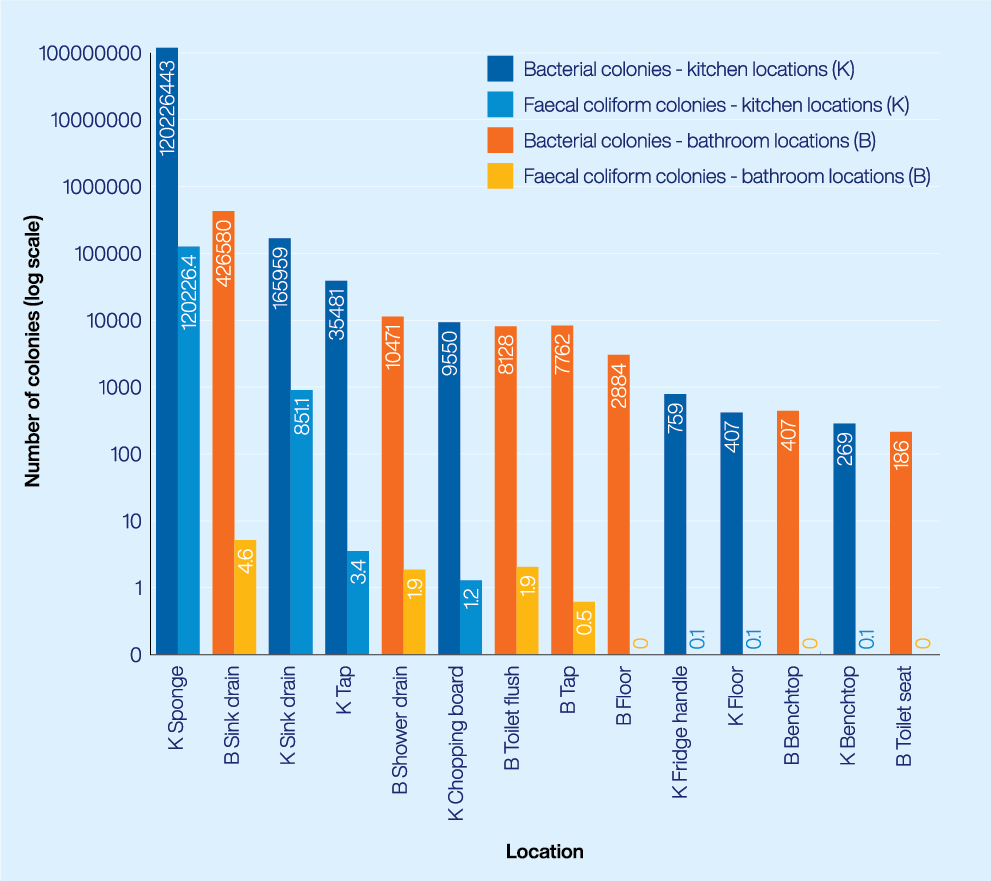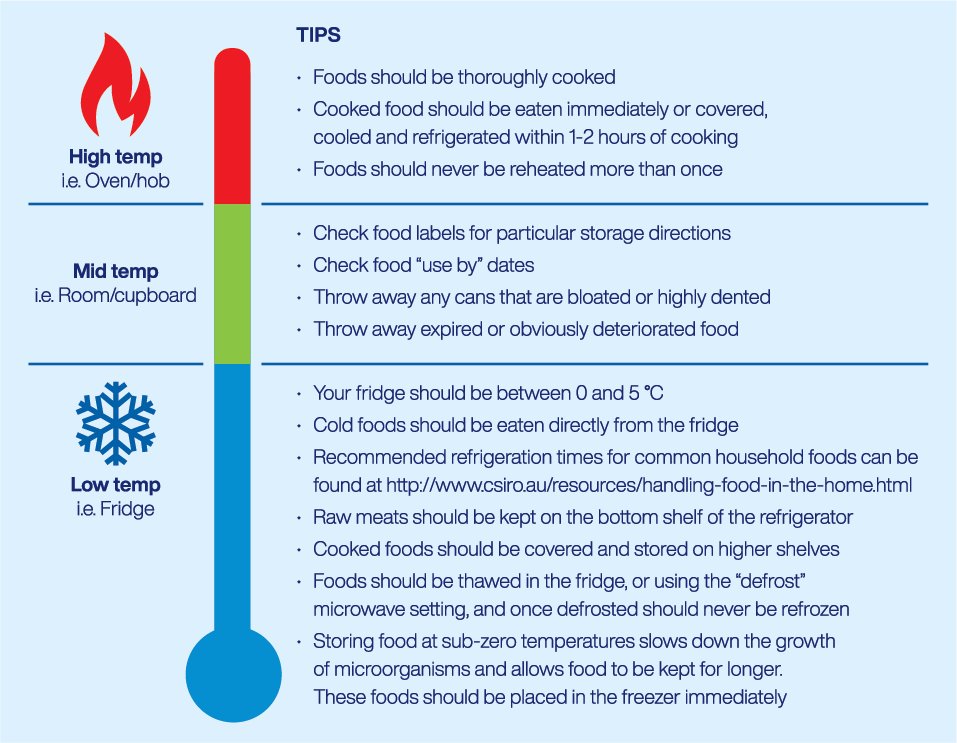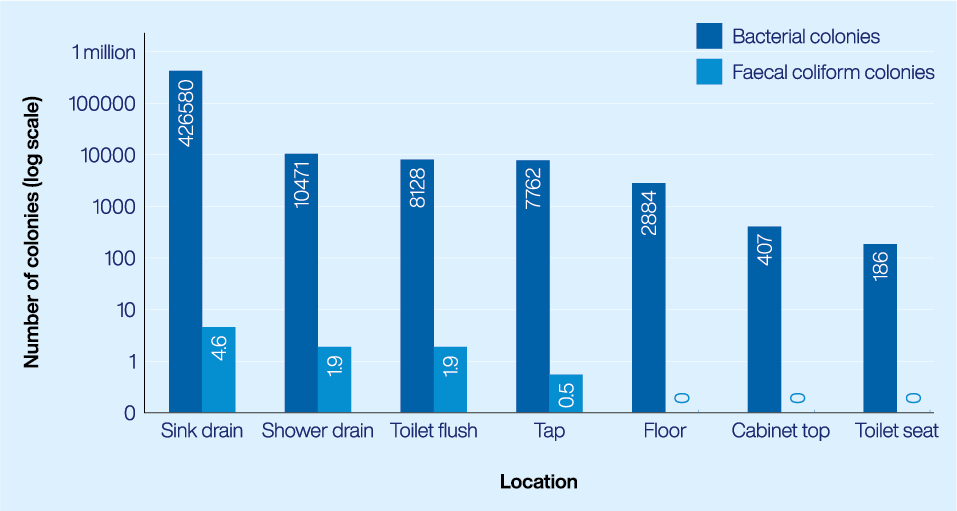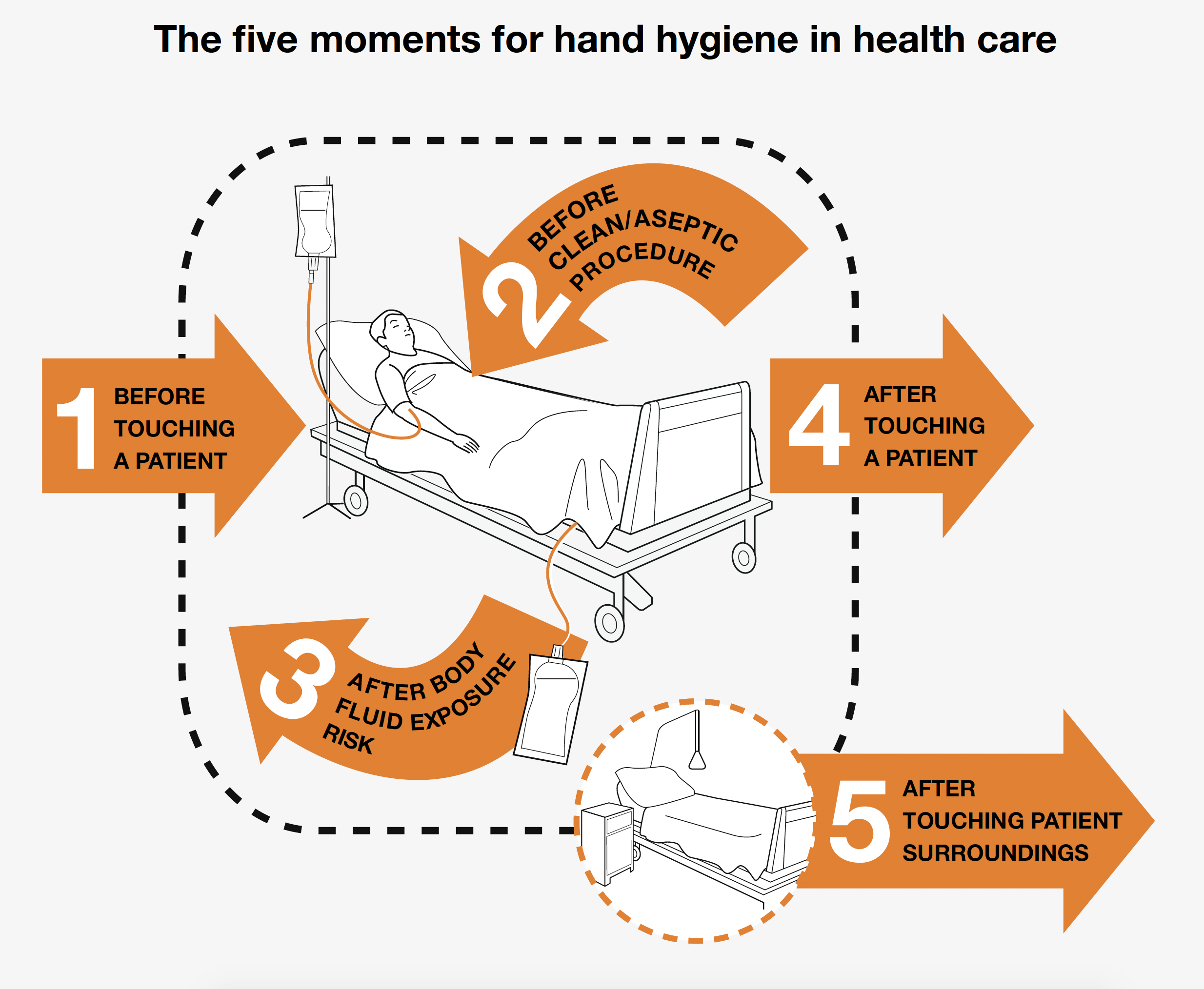Good hygiene in your home keeps your living spaces clean, healthy and comfortable.
Hygiene products designed specifically for the home play a vital role in keeping living areas, food preparation areas, bathrooms and bedrooms clean and comfortable, as well as efficiently cleaning your laundry items. These products help make household chores as quick and painless as possible, giving you time to spend enjoying other activities.
Having a clean, hygienic home also helps to make it a relaxing place to unwind, or to welcome and entertain guests.
AROUND HOME – HOUSEHOLD HYGIENE
Living spaces hygiene
Living spaces hygiene – Why?
You are unlikely to pick up pathogens from the living spaces in your home. But keeping these areas clean and free from debris, dust, dust mites and animal hair can make them more comfortable environments to be in, as well as healthier.
For example, dust particles from the floor and other surfaces can be dispersed into the air, potentially triggering an allergic reaction if inhaled. Mould can grow on surfaces that are prone to dampness. And debris can be attractive to pests such as insects and rodents, which carry germs in and on their bodies and can transmit these germs to us by direct contact (such as biting) or by indirect contact (contaminating our food, surfaces or equipment).
Living spaces hygiene – How?
Often regarded as a necessary evil, household chores such as sweeping, mopping, vacuuming, dusting and wiping up are important ways to keep living spaces clean and hygienic.
Dusting removes dust from hard surfaces.
Regular sweeping or vacuuming removes loose particles, including dust, from floors.
Hard floors can then be wiped down or mopped to remove dirt and visible mould growth using general-purpose cleaners and water, or specialised products for particular flooring materials such as stone, parquetry or laminate that not only remove soils but also preserve the appearance of the flooring material.
Carpets stains can be removed using specialised spot cleaners, or carpet shampoo can be used for a deep clean to remove ground-in dirt and stubborn stains.
Soft furnishings can be cleaned with specialised upholstery shampoos. These are available as sprays, liquids, powders and aerosols for different material types.
Disinfectants are used to kill germs, especially where living areas become contaminated with human or animal body fluids or waste (toilet training, anyone?).
Glass cleaners remove grease and dirt from windows and mirrors, leaving the surface shiny and streak-free. These are available as sprays, liquids, foams and wipes.
Pests
Keeping your home clean and free of debris will help discourage pests. However, should your house become infested, there are a range of pest control products available for insects and arachnids including cockroaches, ants, flies, mosquitoes and spiders: ‘Set and forget’ automatic systems, aerosols and surface sprays, fly papers, bombs, baits, repellents and outdoor lanterns, zappers and coils. There are also rodent traps and baits.
Pets
Pets carry pathogens in the same ways that humans do. But you are not likely to get sick from your pet if you look after your pet’s health, and practice good hygiene. In fact, research suggests that having a pet is good for your health![ii]
Good pet hygiene means:
- Washing your hands after touching pets, their equipment (including cages, fences, food bowls and bedding), or cleaning up their urine, faeces or vomit.
- Cleaning and disinfecting any area that becomes contaminated with animal excretions.
- Keeping your pets and their equipment away from food preparation areas. This means not cleaning animal equipment (such as cages and bowls) in the kitchen sink.
- If you are scratched, licked or bitten by an animal, washing the affected area immediately with soap and running water.
- Keeping your pets immunised and regularly treated for fleas, ticks, worms and other infections.
AROUND HOME – HOUSEHOLD HYGIENE
Kitchen hygiene
Kitchen hygiene – Why?
Would you rather eat off your chopping board or off your toilet seat?
Research findings indicate the toilet seat to be the better option!
The kitchen is actually the room with the most bacteria in the home, including bacteria from human or animal waste (‘faecal coliforms’). In one study, the kitchen sponge or dishcloth was the most contaminated site of all those tested, with over one million times the number of bacterial colonies found on the toilet seat.[iii]
Faecal coliforms are among the many pathogens that can cause food poisoning if they enter the human body. If your household includes young children, pregnant women, elderly or immunocompromised people, they are likely to be particularly susceptible to food poisoning.
Good kitchen hygiene aims to prevent pathogens from entering, spreading around, and multiplying in the kitchen. These can occur in two main ways:
- Cross-contamination – from food, people, pets and other household locations, or between kitchen locations e.g. via contaminated dishcloths and sponges, which can act both as reservoirs and disseminators of pathogens.
- Inappropriate food handling, including preparation and storage.
Take a look at how surfaces in the kitchen compare to those in the bathroom when it comes to number of bacterial colonies.[iii]
Kitchen hygiene – How?
Prevention of cross-contamination
Cross-contamination can occur when you touch a contaminated site, such as the toilet flush, door handle, hand towel or kitchen sponge, and then touch food, a site that will come into contact with food, or a site on your body where the germs can gain entry to your system, e.g. your eyes or mouth.
Handwashing is the first key way to help prevent cross-contamination. Hands should be washed before preparing food and immediately after handling raw foods, especially poultry. There are many different hand hygiene products to suit different tastes and requirements. Click here to read more about hand hygiene.
Surface cleaning and disinfecting is also very important. Cleaning removes soils and grease that can encourage the growth of bacteria, and disinfecting reduces the numbers of pathogens to safe levels. Particular care is needed with benchtops and chopping boards before and after contact with raw foods, as pathogens can survive on surfaces for considerable periods of time, especially when moisture is present. Floors need to be swept regularly and cupboards kept free from food spillage or leakage that could attract pests.
Surfaces can be cleaned with kitchen cleaners or general-purpose cleaners. Some of these cleaning products include disinfectant agents, or specialised disinfectant products are also available. Disinfecting contaminated surfaces followed by paper towel wiping has been reported as the best hygiene practice for decontaminating surfaces that have contacted raw meat.[iv]
Other specialised kitchen cleaning products include oven cleaners, stainless steel cleaners and drain cleaners.
How much time do Aussies spend on food and drink preparation & clean-up each day (on average)?
69 minutes – Women
29 minutes – Men [v]
Washing up plates, cutlery, glasses, cookware and utensils removes food residue, grease and bacteria. Rinsing then removes dislodged food debris and detergent residue from the washed items. In fact, rinsing has been shown to be a vital step in decontamination, with unrinsed dishware actually increasing cross-contamination in the home.[iv]
Dishwashing by hand uses mechanical energy from scrubbing, thermal energy from hot water and chemical energy from a hand dishwashing detergent. Hand dishwashing detergents are liquid or gel formulations designed to remove baked-on food residues but to preserve the life of delicate crockery whilst being mild on hands. Pre-soaking greasy or lodged foodstuffs in hot water and dishwashing detergent can help the cleaning process. Hot water can also kill some microorganisms.
Automatic dishwashers use mechanical energy from water pressure and chemical energy from an automatic dishwasher detergent. Automatic dishwashing detergents are available as powders, liquids and tablets, and are specially formulated to be low-sudsing as foam would inhibit the effective scrubbing action of water. Rinse aids help decrease residues and streaks on washed items following rinsing.
Care needs to be taken with damp cleaning cloths and sponges – whether for surface cleaning or dishwashing – as they can encourage the rapid growth of microorganisms. Different cloths should be used for different jobs to prevent cross-contamination, e.g. a dishcloth used to wipe up raw meat juice should not also be used to dry hands. Cloths should also be cleaned and disinfected or replaced regularly.
Food handling
The key to good food handling is temperature control. Food poisoning bacteria grow best in the ‘danger zone’ from 5-60 °C, so food that has been left at these temperatures can potentially pose a food poisoning risk. Even if food is reheated and bacteria are killed, bacterial toxins that are not destroyed by heat may remain. Therefore, kitchen hygiene also includes suitable food storage and preparation to minimise the time food spends in this temperature ‘danger zone’.
‘Doggy bags’ from restaurants or takeaway outlets can present particular risks. If you take food home, it should be refrigerated as soon as possible and reheated, so it is piping hot before consumption. Any uneaten ‘doggy bag’ leftovers should be discarded after 24 hours.[vi]
The NSW Food Authority provides key food safety tips – ‘Keep it cold’, ‘Keep it clean’, ‘Keep it hot’ and ‘Check the label’. For more information call the NSW Food Authority helpline on 1300 552 406.
Finally, a hygienic kitchen is pest-free. Keeping food securely covered, removing food debris from floors and benches promptly, and disposing of rubbish in a securely covered bin will help. See Pests for more information on pest control in the home.
AROUND HOME – HOUSEHOLD HYGIENE
Laundry hygiene
Laundry hygiene – Why?
Your household contains many different types of items that need to be laundered, including clothing, towels and bed linen. These items can become soiled and stained from direct contact with the human body and the environment.
Soils and stains can be caused by a wide range of substances. Mould, for example, is a type of fungus that can build up on damp clothing and cause a musty smell, fabric stains, and can trigger skin irritations or respiratory conditions in some individuals.
Soils: invisible matter, including microorganisms, spread throughout fabric
Stains: localised areas of visible discolouration
Regularly laundering not only removes microorganisms that could be harmful to your health, but also gives fabrics cleanness and freshness, maintaining their appearance and making them comfortable to the touch.
How much time do Aussies spend on laundry and clothes care each day (on average)?
29 minutes – Women
5 minutes – Men [v]
Laundry hygiene – How?
Laundry detergent
Laundry detergent is an essential part of laundry hygiene, providing the chemical energy to clean fabric by removing soils and stains. Laundry detergents come as powders, liquids and tablets. There are many specialised detergents to cater for a range of different laundry needs, including formulations for top- or front-loading machines; for white, coloured or dark clothing; for specific fabric types; or to give particular wash features including softness, freshness, fragrance (or fragrance-free), and brightness.
There are also other specialised laundry products, including:
Bleaches, which remove stains and kill microorganisms. Chlorine bleaches get white clothing really white, and non-chlorine bleaches can also remove tough stains from coloured clothing without affecting the colour. Some non-chlorine bleaches are suitable for adding to the wash load.
Pre-wash stain removers and spot stain removers, which often contain enzymes and bleaching agents, are used on fabrics before washing. Enzymes help break down specific stains. Stain removers are available as powders, liquids, sprays, aerosols and sticks.
Fabric softeners, which help prevent the build-up of static that can occur from fabrics rubbing together, making them feel softer and smoother.
For most laundry items an effective laundry detergent will do the job. However, for heavily soiled laundry, clothing and linen from an infected person, or items contaminated with faeces or vomit, bleaches, bleach-based detergent or pre-wash soakers should be considered. Washing in water above 60 °C is also an effective way of killing many microorganisms.
Washing machine
Most Australian homes have a washing machine. The washing machine provides the mechanical energy needed to agitate and spin clothing, to pump water, and to push detergent through fabrics. These actions help remove soils and stains from fabrics, remove detergent residue after washing, and remove water after rinsing.
Washing machines are available with different:
- Capacities
- Formats – top loaders, front loaders and high efficiency machines
- Water and energy efficiencies
- Performance characteristics – wash, rinse, spin and gentleness
- Additional features
Microorganisms often thrive in dark, moist environments and can build up in your washing machine or grow on damp laundry.
To help prevent the growth of microorganisms on wash items or in your washing machine, hang or dry laundry as soon as possible after the cycle has finished, and avoid putting damp items in the laundry hamper. It can also help to leave your washing machine open between washes so that it can dry out thoroughly. If your washing machine becomes contaminated, refer to the manufacturer’s instructions for advice; some washing machines have a “maintenance cycle” which performs a thorough machine clean. Check out the WashWise website for lots more information on ‘doing the laundry’, including how to set up your laundry, do the wash and dry your clothes.
AROUND HOME – HOUSEHOLD HYGIENE
Bedroom hygiene
Bedroom hygiene – Why?
Australians spend a lot of time sleeping – an average of 8.5 hours every day.[v] One third of every day – that’s a lot of time in the bedroom! And children spend even longer sleeping.
Bedrooms generally pose a low infection risk. But keeping the bedroom free from debris and dust, and keeping bedding clean, can make this room a restful, comfortable and healthy environment.
Of particular relevance to bedroom hygiene are dust mites, which feed on human skin scales and thrive in humid climates. Droppings from dust mites contain proteins that can trigger allergies such as asthma, eczema and allergic rhinitis in some people. Since an average human loses moisture each night and sheds skin flakes, a typical mattress provides an ideal environment for dust mites.
Bed bugs are also on the increase in Australia. Bites from bed bugs can cause allergic skin reactions in some individuals.
How many dust mites live in a used mattress?
100,000 –
10 million[vii]
Bedroom hygiene – How?
Regularly vacuuming or sweeping helps keep floors free from debris, dust, dust mites and animal hair.
Pillow and mattress protectors can be used to help prolong the life of your less-easily washed mattress and pillows. Mattress protectors need to encase the whole mattress to be effective against dust mites, and waterproof mattress covers are especially important for children who wet the bed. Protectors and bed linen should be regularly laundered, and the mattress allowed to air while the sheets are being changed. There is no clear recommendation for how frequently bed linen should be changed, but individuals with allergies would benefit from more frequent changes.
Mattresses can also be vacuumed to remove dust, dust mites and their droppings, and allergens such as pollen. Vacuuming can also remove bed bugs but will not remove their sticky eggs. However, bed bugs and their eggs can be killed by heat, so washing infested linen at 60 °C should be effective. There are also specific insecticides that are formulated to kill bed bugs and their eggs. Decreasing the amount of carpeted flooring and soft furnishings (curtains, rugs, soft toys etc) could also help decrease the problem.
How much of your pillow is dead dust mites & their droppings?
10%[vii]
AROUND HOME – HOUSEHOLD HYGIENE
Bathroom hygiene
Bathroom hygiene – Why?
Bathrooms and toilets can contain large numbers of microorganisms, including pathogens.
Human faecal matter (poo) contains pathogens from the gut.
Microorganisms can be shed from the skin especially when you take off clothing, have a shower or towel off.
Saliva, mucous and nasal secretions all contain microorganisms.
Microorganisms can multiply rapidly in the moist bathroom environment. Damp towels and bathmats can encourage microbial growth. Mould that builds up on the shower, shower curtain or bath can trigger respiratory allergies in some people. Soap residue and mineral deposits (from hard water) also encourage microorganism growth.
Bathroom hygiene – How?
The most important aspect of good bathroom hygiene is washing your hands after using, or cleaning, the toilet. This helps prevent cross-contamination of surfaces with pathogens from your hands. There are many different hand hygiene products to suit different preferences and requirements. For more see About you > Hands.
Toilet hygiene also means closing the toilet lid before flushing – and avoiding splashing during use! Clean the toilet bowl regularly with a specialised toilet cleaner. Toilet blocks can be attached to the rim of the toilet bowl for automatic dispensing with each flush of the toilet. If someone has diarrhoea or vomiting, the toilet should be disinfected after each use as an extra precaution.
Keeping bathroom surfaces as dry as possible will help combat the growth of microorganisms. Ventilating the bathroom by opening the window or using an exhaust fan, especially when taking a bath or shower, will help dissipate moisture. Hand towels, bath towels and bathmats need to be hung after use, and frequently laundered.
Surfaces should also be cleaned regularly. Bathroom cleaners remove grease, soap scum and mineral build-up. Some also contain antimicrobial agents targeting mould or bacteria, or bleach-based products that kill a broad range of microorganisms. Bathroom cleaners are available as liquids, sprays, gels and wipes. Disinfectants should be used for areas that become contaminated with bodily excretions, as well as frequently touched surfaces including the toilet flush, toilet seat and taps, or where microorganisms build up such as the shower curtain.
Make sure you don’t use the same cleaning cloth or brush for the toilet as you do for the bathroom sink – or the kitchen!
[i] A.I.S.E. Pan-European Consumer Habits Survey 2017
[ii] Sidney Stevens, 26 August 2019, ‘Pets are good for your health, and we have the studies to prove it’, mnn.com.
[iii] Rusin P, Orosz-Coughlin P and Gerba C, 1998, ‘Reduction of faecal coliform, coliform and heterotrophic plate count bacteria in the household kitchen and bathroom by disinfection with hypochlorite cleaners’, Journal of Applied Microbiology, 85, 819–828.
[iv] Kagan, LJ, Aiello, AE and Larson E, 2002, ‘The role of the home environment in the transmission of infectious diseases’, Journal of Community Health, 24(4), 247–467.
[v] Australian Bureau of Statistics, 4153.0 – How Australians use their time, 2006
[vi] Queensland Health, 2015, Food safety information for doggy bags.
[vii] http://www.ehso.com/ehshome/dustmites.php
[viii] Gerba CP, Wallis C and Melnick JL, 1975, ‘Microbiological Hazards of Household Toilets: Droplet Production and the Fate of Residual Organisms’, Applied Microbiology, 30(2), 229–237.





